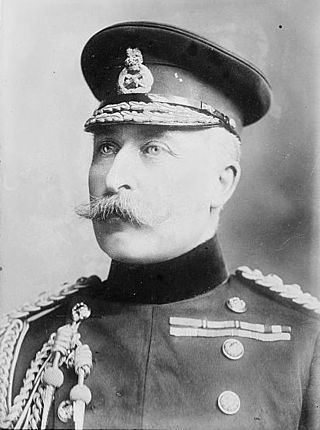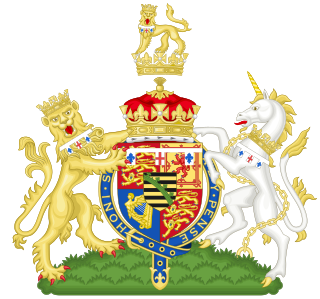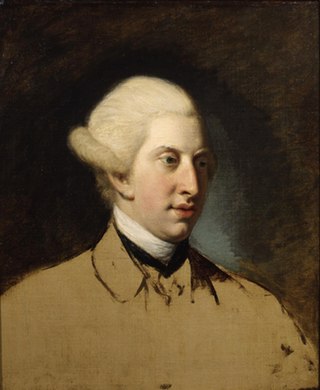Duke of Edinburgh is a title in the British peerage.
Duke of Edinburgh may also refer to:

Frederick, Prince of Wales was the eldest son and heir apparent of King George II of Great Britain. He grew estranged from his parents, King George and Queen Caroline. Frederick was the father of King George III.

Prince Edward, Duke of Edinburgh, is the youngest child of Queen Elizabeth II and Prince Philip, Duke of Edinburgh, and the youngest sibling of King Charles III. Edward is 13th in line of succession to the British throne.

Duke of Edinburgh, named after the city of Edinburgh in Scotland, is a substantive title that has been created four times since 1726 for members of the British royal family. It does not include any territorial landholdings and does not produce any revenue for the title holder.

Duke of Gloucester is a British royal title, often conferred on one of the sons of the reigning monarch. The first four creations were in the Peerage of England and the last in the Peerage of the United Kingdom; the current creation carries with it the subsidiary titles of Earl of Ulster and Baron Culloden.

Prince Arthur, Duke of Connaught and Strathearn, was the seventh child and third son of Queen Victoria of the United Kingdom and Prince Albert of Saxe-Coburg and Gotha. He served as Governor General of Canada, the tenth since Canadian Confederation and the only British prince to do so to date.

Duke of Connaught and Strathearn was a title in the Peerage of the United Kingdom that was granted on 24 May 1874 by Queen Victoria of the United Kingdom of Great Britain and Ireland to her third son, Prince Arthur. At the same time, he was also granted the subsidiary title of Earl of Sussex.

Duke of Kent is a title that has been created several times in the peerages of Great Britain and the United Kingdom, most recently as a royal dukedom for the fourth son of King George V. Since 1942, the title has been held by Prince Edward, Queen Elizabeth II's cousin.

Birgitte, Duchess of Gloucester, is a Danish member of the British royal family. She is married to Prince Richard, Duke of Gloucester, a grandson of George V. They have three children.

Prince William Henry, Duke of Gloucester and Edinburgh,, was a grandson of King George II and a younger brother of George III of the United Kingdom.

Prince William Frederick, Duke of Gloucester and Edinburgh, was a great-grandson of King George II of Great Britain and the nephew and son-in-law of King George III. He was the grandson of both Frederick, Prince of Wales, and Edward Walpole. Prince William married Princess Mary, the fourth daughter of George III.

Princess Sophia of Gloucester was a great-granddaughter of King George II of Great Britain and niece of King George III.
Colonel-in-chief is a ceremonial position in a military regiment. It is in common use in several Commonwealth armies, where it is held by the regiment's patron, usually a member of the royal family.

Henry Scott, 3rd Duke of Buccleuch and 5th Duke of Queensberry KG FRSE was a Scottish nobleman and long-time friend of Sir Walter Scott. He is the paternal 3rd great-grandfather of Princess Alice, Duchess of Gloucester, and the maternal 4th great-grandfather of Prince William of Gloucester and Prince Richard, Duke of Gloucester.

The Chief Maqoma Regiment is a reserve infantry regiment of the South African Army. The regiment is located in the city of Port Elizabeth.

The Nelson Mandela Artillery Regiment is a reserve artillery regiment of the South African Army and part of the South African Army Artillery Formation.
A Royal Fellow of the Royal Society is a member of the British royal family who has been elected a Fellow of the Royal Society. The council of the Royal Society recommends members of the Royal Family to be elected and then the existing Fellows vote by a secret ballot whether to accept them. The ballots have only a box to tick supporting the measure; those opposing have to write "no" or otherwise mark or spoil the paper. As of 2022 the Patron was Queen Elizabeth II, and Royal Fellows were:

St George's Chapel at Windsor Castle in England is a castle chapel built in the late-medieval Perpendicular Gothic style. It is both a Royal Peculiar and the Chapel of the Order of the Garter. St George's Chapel was founded in the 14th century by King Edward III and extensively enlarged in the late 15th century. It is located in the Lower Ward of the castle. The castle has belonged to the monarchy for almost 1,000 years and was a principal residence of Elizabeth II before her death. The chapel has been the scene of many royal services, weddings and burials – in the 19th century, St George's Chapel and the nearby Frogmore Gardens superseded Westminster Abbey as the chosen burial place for the British royal family. The running of the chapel is the responsibility of the dean and Canons of Windsor who make up the College of Saint George. They are assisted by a clerk, verger and other staff. The Society of the Friends of St George's and Descendants of the Knights of the Garter, a registered charity, was established in 1931 to assist the college in maintaining the chapel.

Duchess of Edinburgh is the principal courtesy title held by the wife of the Duke of Edinburgh. There have been four Duchesses of Edinburgh since the title's creation. Following the accession of Charles III in 2022, the Dukedom of Edinburgh merged in the Crown. Following his mother's wishes, on 10 March 2023, Charles III conferred the title Duke of Edinburgh to his youngest brother, Prince Edward, and his wife, Sophie, became the Duchess of Edinburgh.